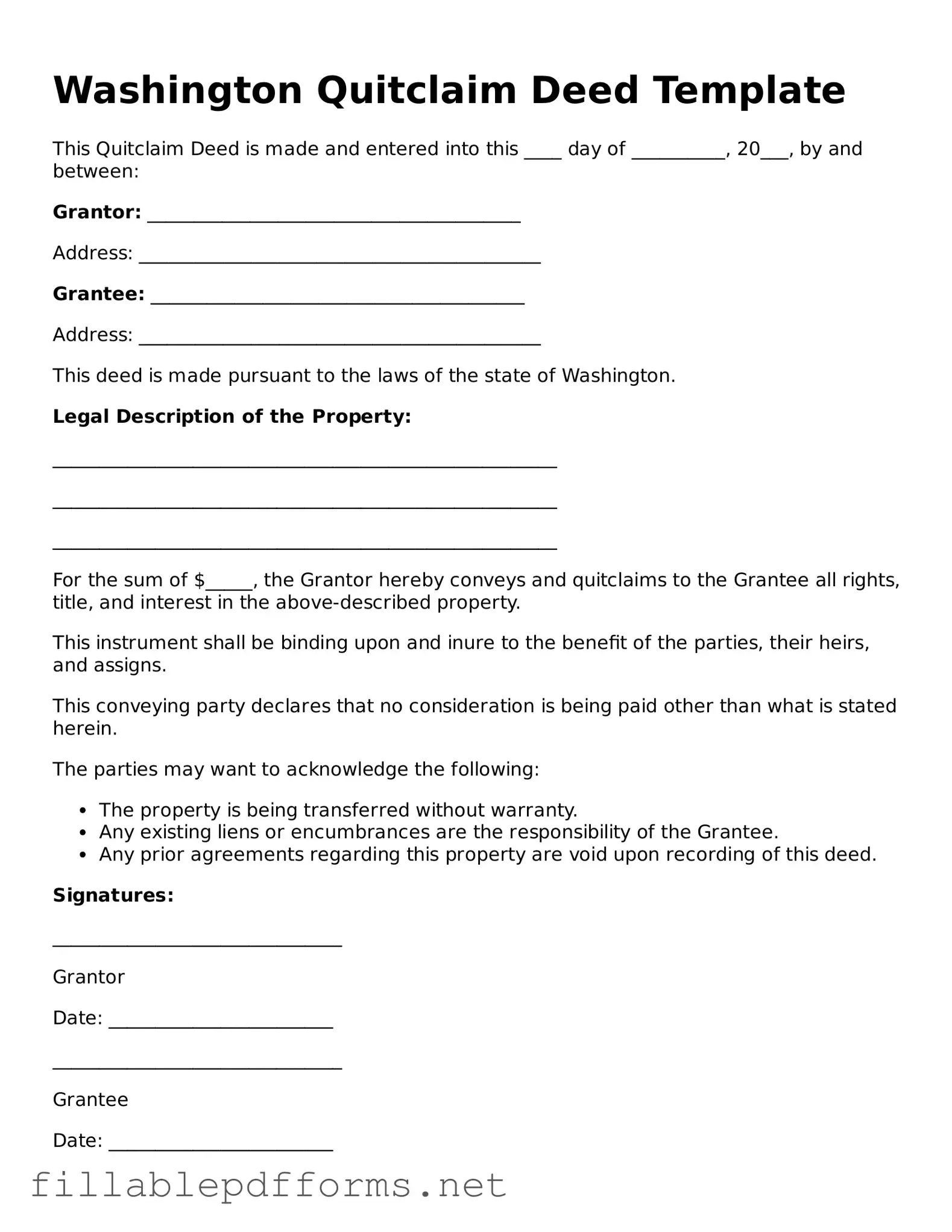Attorney-Verified Quitclaim Deed Form for Washington State
A Washington Quitclaim Deed is a legal document used to transfer ownership of real estate from one party to another without guaranteeing the title's validity. This form is often utilized in situations where the parties know each other well, such as family transfers or between friends. Understanding its implications can help ensure a smooth transaction.
Launch Editor Here
